Lee Krasner (48 page)
Authors: Gail Levin

Krasner recalled that “tears were literally pouring down” when she painted these bright colors and biomorphic forms. They evoke a figure in a garden, an activity that she shared with Pollock after they first moved to Springs. CR 311
Listen
, 1957, oil on cotton duck, 63¼ x 58½ in. Private collection. Photograph courtesy of the Robert Miller Gallery.
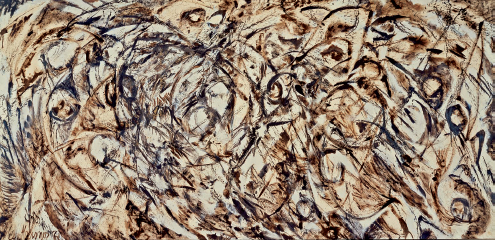
To name her picture, Krasner drew upon the opening lines of Emerson's “Circles,” which had impressed her years before and appealed to her appreciation of nature and patterns. She had focused on disembodied eyes as early as the 1930s, under the influence of Surrealism. CR 350
The Eye Is the First Circle
, 1960, oil on canvas, 92¾ x 191
7
/
8
in. Private collection. Photograph courtesy of the Robert Miller Gallery.
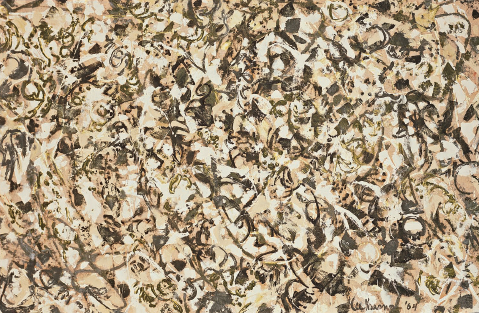
The Springs
pays homage to the hamlet in East Hampton where Krasner and Pollock made their home in 1945. The all-over pattern suggests reference to local flora and to Pollock's 1946 series, “Sounds in the Grass.” CR 401
The Springs
, 1964, oil on canvas, 43
1
/
8
x 66
1
/
8
in. The National Museum of Women in the Arts, Washington, D.C., gift of Wallace and Wilhelmina Holladay.
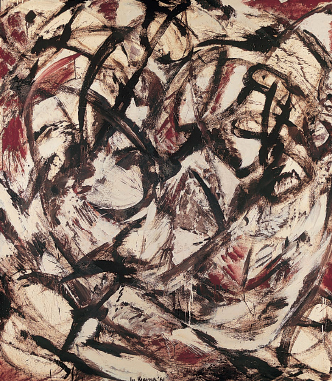
Krasner began to warm up the canvases of her umber series by adding warm reddish tones. These are among her most gestural paintings. CR 357
Double Helix
, 1961, oil on canvas, 70½ x 62½ in. Private collection.
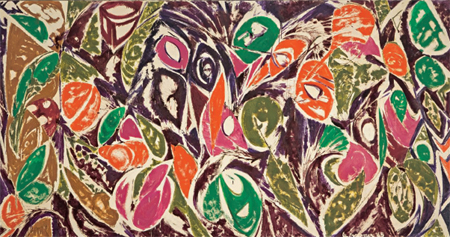
Among the colorful biomorphic shapes repeated across the wide canvas, it is possible to see what could be a bird form, however abstract, on the left side of the painting, which appears to allude to her difficulty in telling right from left. CR 431
Right Bird Left
, 1965, oil on canvas, 70 x 135 in. Collection of Ball State University Museum of Art, Muncie, Indiana, gift of David T. Owsley.
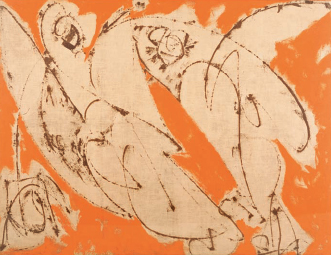
Krasner named this painting
Courtship
, which was most likely an allusion to David Gibbs, whom one of her friends called “a charming cad.” CR 438
Courtship
, 1966, oil on canvas, 51 x 71 in. Private collection.
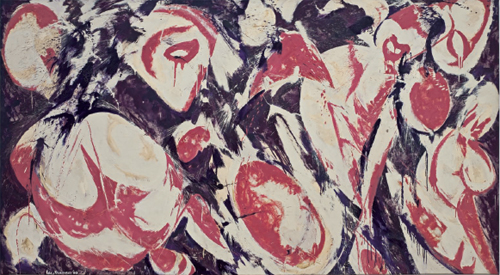
This title recalls a myth: primordial Earth gave virgin birth to Sky (Uranos), who promptly cohabited with his mother to produce offspring called Titans. When Sky blocked his mother, Gaea, from giving birth to monsters, she conspired with their son, Kronos, who castrated his father. The painting's agitated biomorphic forms in bright magenta suggested the violence of the title. CR 440
Gaea
, 1966, oil on canvas, 69 x 120 in. The Museum of Modern Art, New York (Licensed by SCALA / Art Resource, NY and © 2010 The Pollock-Krasner Foundation), Artist's Rights Society (ARS), New York. Kay Sage Tanguy Fund.
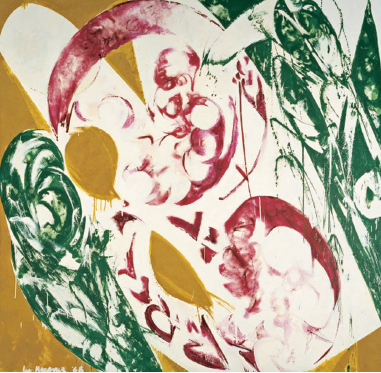
Krasner commented, “I can remember walking across vacant lots on my way to school and my enchantment at seeing and picking clover, buttercups, and dandelions. I'm sure that this memory among other things is in
Pollination
⦔ CR 449
Pollination
, 1968, oil on canvas, 81¼ x 83 in. Dallas Museum of Art, gift of Mr. and Mrs. Algur H. Meadows and the Meadows Foundation, Incorporated.
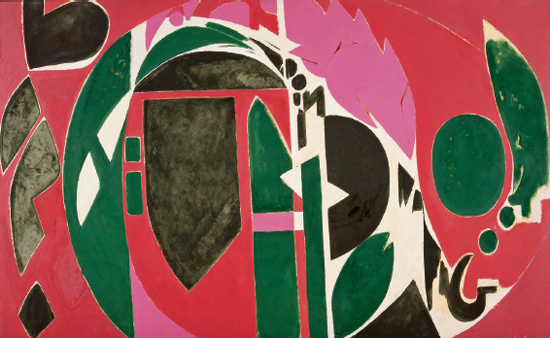
The title, which refers to embryonic development that reproduces the ancestral features of the species, suggests Krasner's deep engagement with nature, which remained of utmost importance to her throughout her life. The intense colors and crisp edges recall Matisse's late work. CR 540
Palingenesis
, 1971, oil on canvas, 82 x 134 in. Pollock-Krasner Foundation, New York. Photograph courtesy of the Robert Miller Gallery.
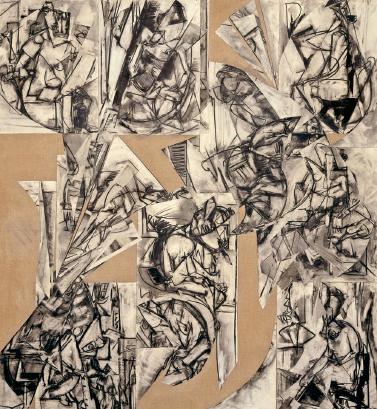
This work contains a number of rejected figurative drawings from her time at the Hofmann School. The title of the series reflects her fascination with time and the verb “to see” here she chose “Were you seeing?” CR 565
Imperfect Indicative
, 1976, collage on canvas, 78 x 72 in. Pollock-Krasner Foundation, New York. Photograph courtesy of the Robert Miller Gallery.
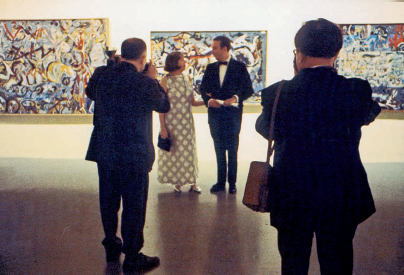
Lee Krasner with Bill Lieberman at the 1967 retrospective of Jackson Pollock at the Museum of Modern Art, New York. Visible from left to right are Pollock's
Pasiphae
(c. 1943),
The She-Wolf
(1943), and
Guardians of the Secret
(1943). Photograph by Steven Paley.
